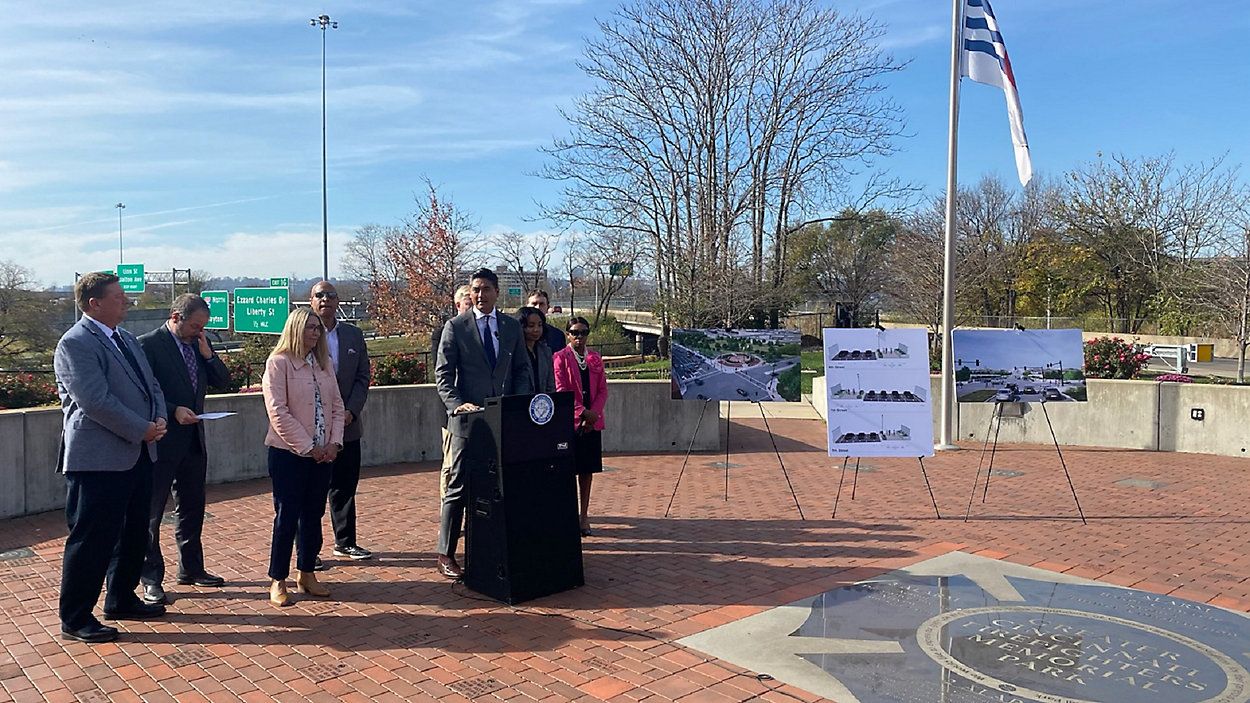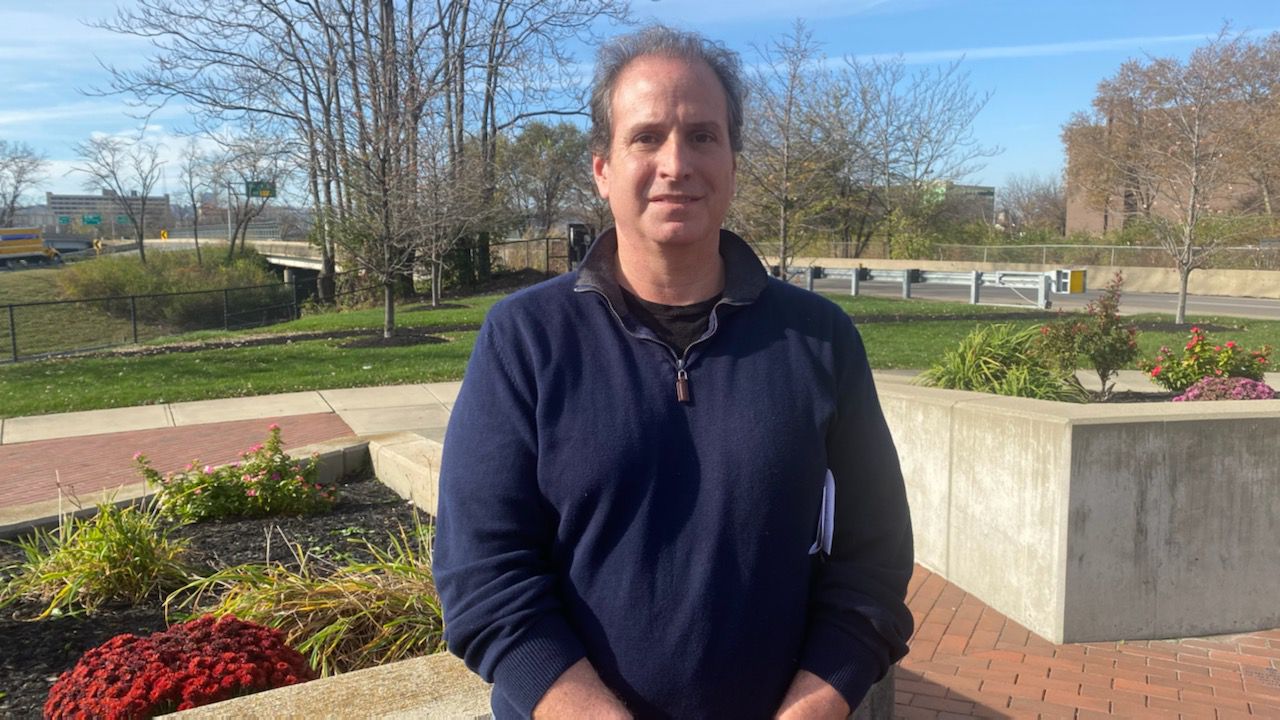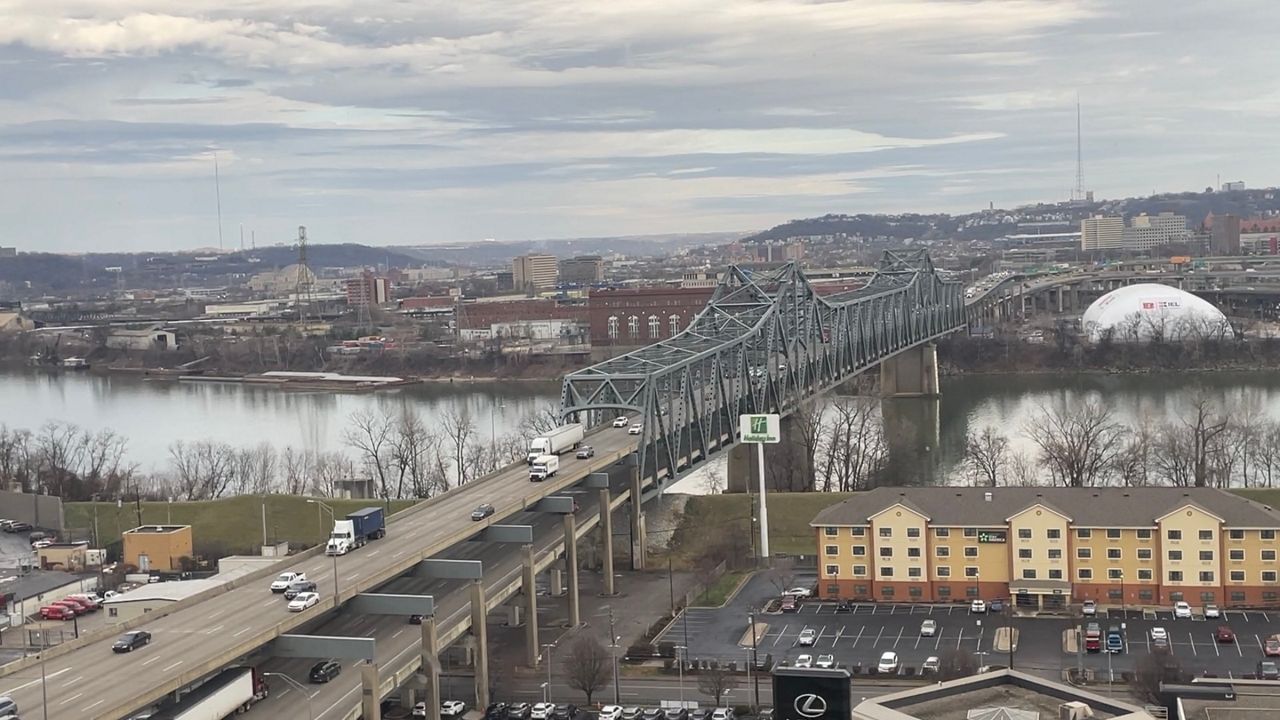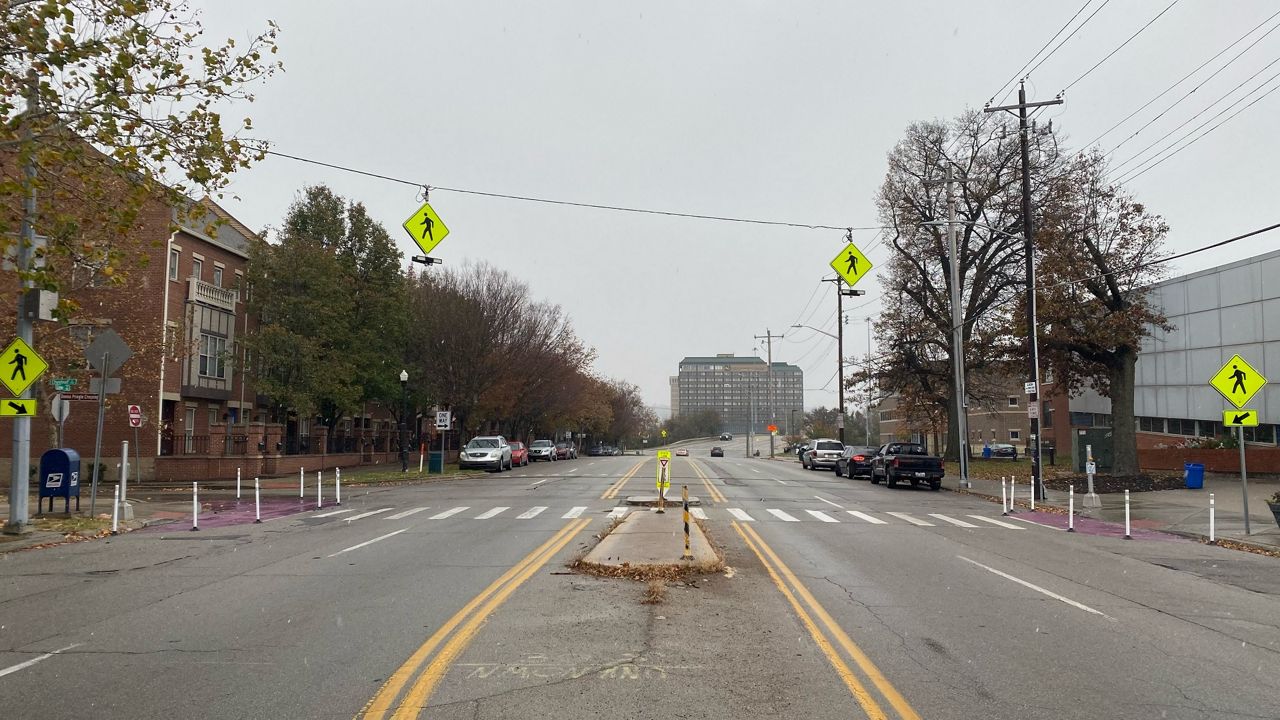CINCINNATI — Six months ago, officials from Cincinnati and the Ohio Department of Transportation gathered along Central Avenue to announce a plan that would reclaim nearly 10 acres of land in the heart of downtown as part of the long-awaited Brent Spence Bridge Corridor project.
The plan called for the re-imaging of Interstate 75 and related highway ramps running through the city’s urban core. It aimed to free up large swaths of valuable downtown land for redevelopment. But just as important to proponents, it offered an opportunity to reconnect historically Black neighborhoods, namely Queensgate and West End, decimated by the interstate expansion in the 1960s.
ODOT insisted in November that the 9.5 acres of land was the current amount of land possible to reclaim, a resident-led organization called Bridge Forward pushed for Cincinnati’s mayor and City Council to consider its proposal. On paper, it would triple the amount of reclaimed land.
After months of discussion, City Council’s Climate, Environment and Infrastructure Committee voted unanimously on Tuesday to ask ODOT to reconsider its plan for the Cincinnati portion of the $3.6 billion project.
What You Need To Know
- City Council looks to ask ODOT to find more land to reclaim in downtown Cincinnati as part of the Brent Spence Bridge project
- The current plan reclaims nearly 10 acres of land, but a resident-led group called Bridge Forward believes the number could go as high as 30
- Council legislation asks ODOT to report back on the feasibility of Bridge Forward's proposal and other options for adding more land
- Council member Mark Jeffreys believes this new process wouldn't impact the timeline or budget for the project
The motion from Council member Meeka Owens asks the state-run agency to conduct a feasibility study that would look at both Bridge Forward proposal and its own plan to see if there are opportunities to reclaim as much land as possible.
An amendment to the legislation from Council member Mark Jeffreys directs ODOT to outline associated costs and overall community benefits as well.
City Council can approve the legislation Wednesday during its regular meeting.
“Our goal is to give ODOT the freedom to say, ‘Hey, this does or doesn’t work, but here’s an alternative that gets us as close as possible to those 30 acres,’” said Jeffreys, one of City Council’s most outspoken transportation and pedestrian safety advocates.
“Maybe it just 25 acres, maybe it’s 20. Who knows, maybe it’s more,” he added. “Anything more than the 9.5 we have today is a win.”
Bridging the gap for reclaimed land
The Brent Spence Bridge Corridor Project calls for the construction of a companion bridge alongside the existing nearly 60-year-old bridge, which connects Cincinnati and Covington, Ky.
The project — which received more than $1.6 billion in federal grant money — also includes infrastructure improvements on both sides of the Ohio River. That includes corridors of more than 1 mile in Cincinnati and 3 miles in northern Kentucky.
ODOT’s current plan focuses on reclaiming land, both to enhance downtown green space and create new areas for future development, especially on John Street.
The 9.5 acres of land ODOT identified has an estimated value of $20 million, Mayor Aftab Pureval said in November.

There are no definite plans for any reclaimed areas, Pureval said at the time, but he envisioned creating a place where people “can either work or enjoy retail and restaurants.” He also stressed that having developable land directly west of the Duke Energy Convention Center creates “some really exciting opportunities for large-scale investments.”
In November, ODOT officials described the original Bridge Forward plan as impractical as constructed. But Jeffreys believes having Bridge Forward — an organization outside of “the process,” as he called it — can challenge perceptions about why things must be done a certain way.
“Having community feedback is so important transformative projects like this one,” Jeffreys added.
The Bridge Forward concept began as Brian Boland’s capstone project in graduate work at Xavier University.
The issue is personal for him. His grandfather owned a restaurant, the Columbia Cafe, on John Street years ago, Boland said. The area where it existed is now a part of the exit structure for the Sixth Street ramp.
“On the one hand, this is about making a gesture about some of the over-reaches of the past, but mostly, we’re about setting the stage for the future,” Boland said. “This has always been forward looking at the future and the impact this could have on the next generations of Cincinnatians.”
Boland’s inspiration was the community rally to change elements of Fort Washington Way in the late 1990s. That project — which sought to better connect the Central Business District to the riverfront — was much further along at the time of proposed design refinements, Boland said.
Those changes, Boland said, made it possible for the creation of The Banks, Smale Riverfront Park, a music venue and the city’s overall riverfront development, Boland said.
Bringing the community to the table
The Brent Spence Project is in the middle of a months-long design process. There’s a general, mostly complete plan that’s been in place, but now they’re working to fine-tune things, Jeffreys said.
“This is just doing the same thing,” he added. “It’s getting the pieces in place so that 20 years from now, some new generation of people will do something amazing because of the work we’re trying to do today.”
Matt Bruning, ODOT’s spokesperson, said his agency is open to evaluating opportunities to reclaim more land as long as they’re practical.

ODOT officials have already met with Bridge Forward three times this year between Feb. 10 and March 17. Bruning said the project team continues to review the Bridge Forward proposal and aims to provide feedback soon based on engineering considerations.
As part of those discussions, ODOT has reduced the footprint of the project, improved pedestrian and bicycle facilities and connectivity between downtown Cincinnati and its western neighborhoods, significantly reduced affects to nearby properties, and “considered plans, ideas and comments from the public and city,” Bruning said.
Comments and ideas from the public and responses from the project team are being posted on the project website.
“Cincinnati City Council’s resolution asks the Brent Spence Bridge Corridor Project Team to continue efforts we’ve already been engaged in that consider input from the public and city to produce the best plan that meets the project’s needs and safety of the public while maintaining or reducing current timelines, budget and construction schedules,” a statement from ODOT reads. “We look forward to building on these efforts as the project moves forward.”
The most recent version of the Bridge Forward plan addresses several concerns raised by ODOT and other critics, Boland said. Issues included vehicle clearances, traveling over railroad tracks and addressing an area Bridge Forward refers to as “the trench.”
Boland admitted his original graduate school project needed the help of more technical expertise. Bridge Forward brought in experts to make sure slopes fit within federal highway guidelines and they had the measurements for turn radiuses correct, he added.
One of the biggest changes is moving Bridge Forward’s original Fourth Street tunnel to Fifth Street. Boland said it’s just more “practical” that way.
“We’d love to get all 30 acres,” he said, “but we’ll just be happy for the city to make the best decision possible for our future.”
Jeffreys stressed that any changes to the plan shouldn’t affect the overall timeline, and it doesn’t jeopardize any previously awarded grant funding. He expects ODOT to report back by this summer or early fall.
“Once we get all those facts on the table, then it’s not speculating that one plan is better than the other,” he added. “Then, it’s just about evaluating and assessing trade-offs based on facts.”






